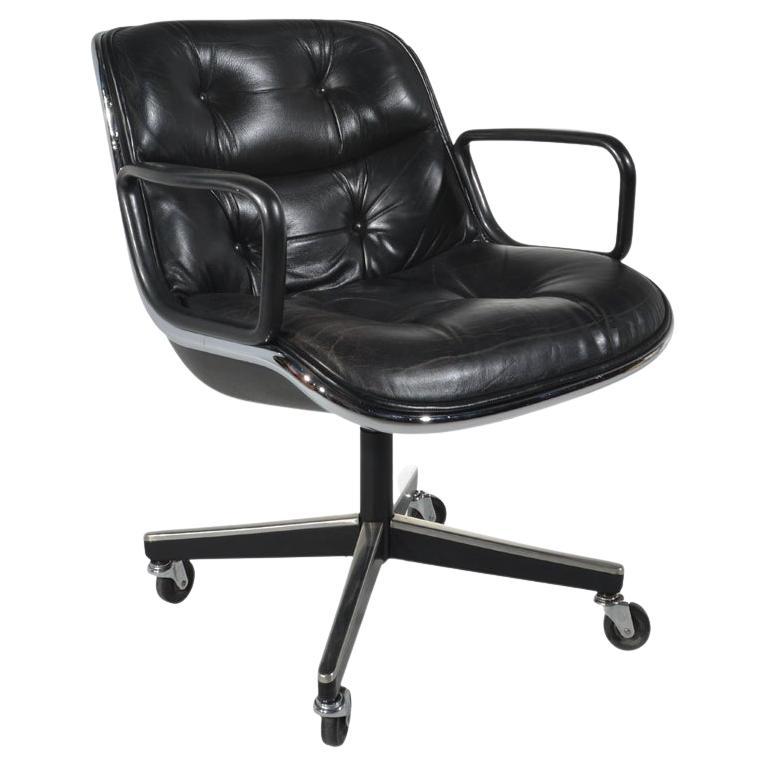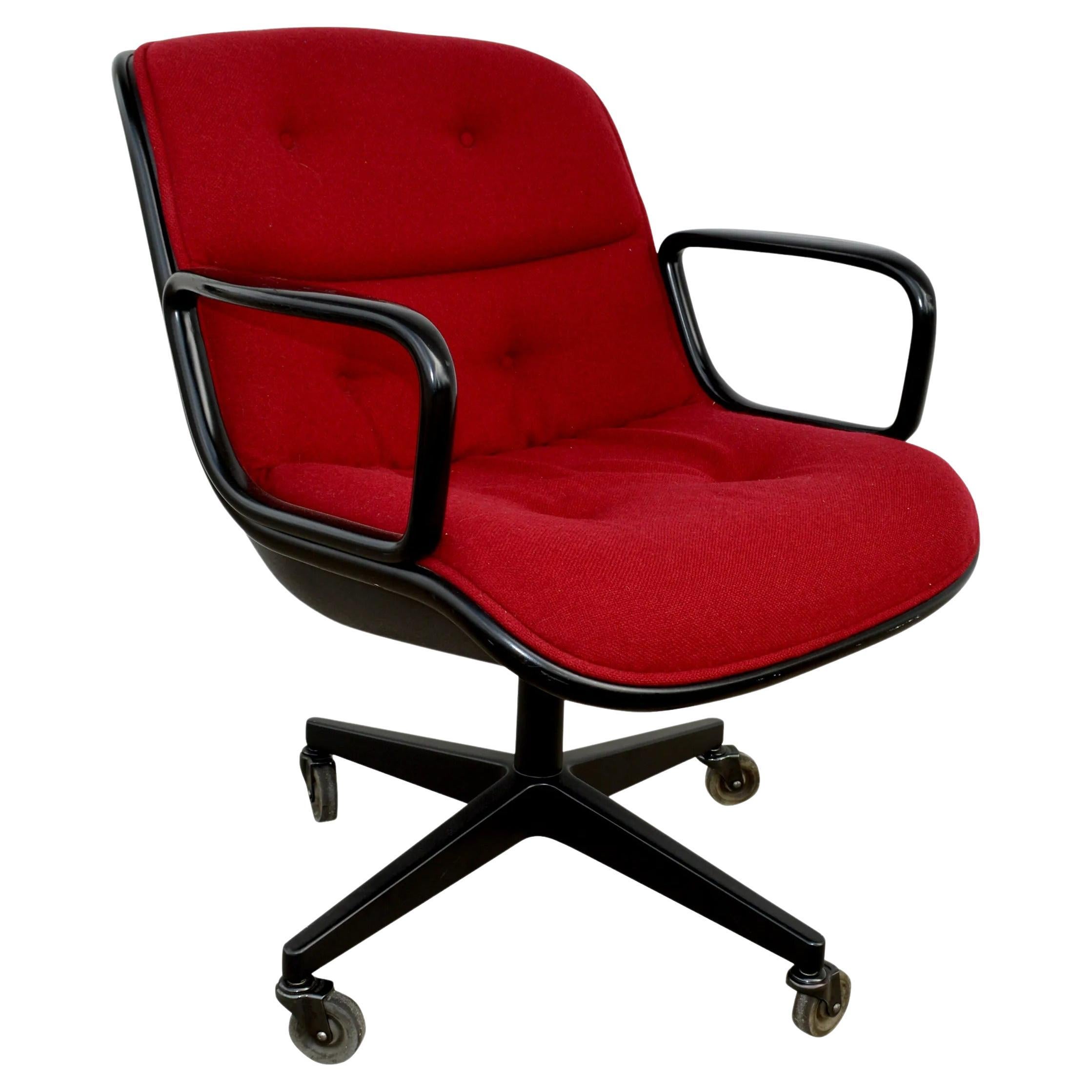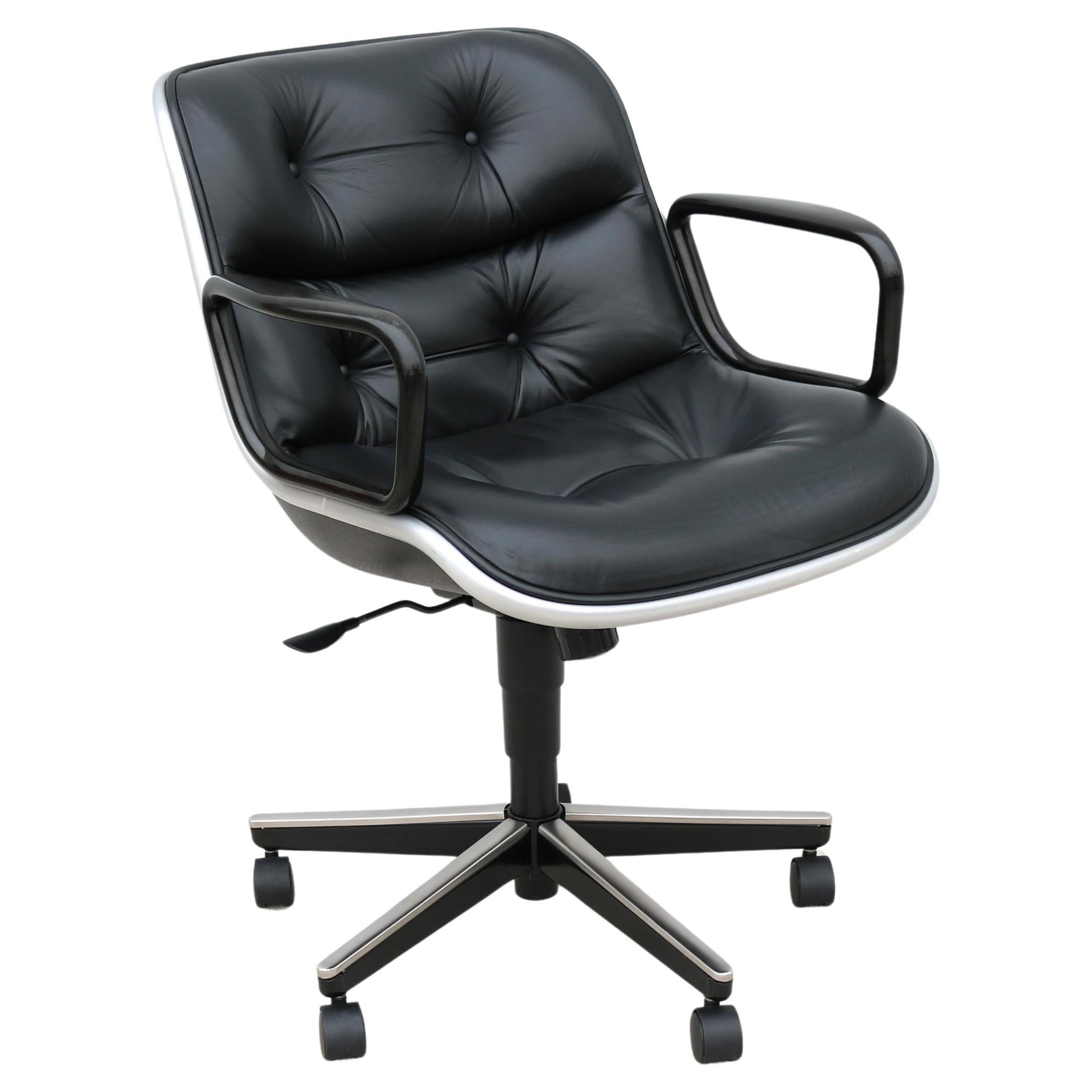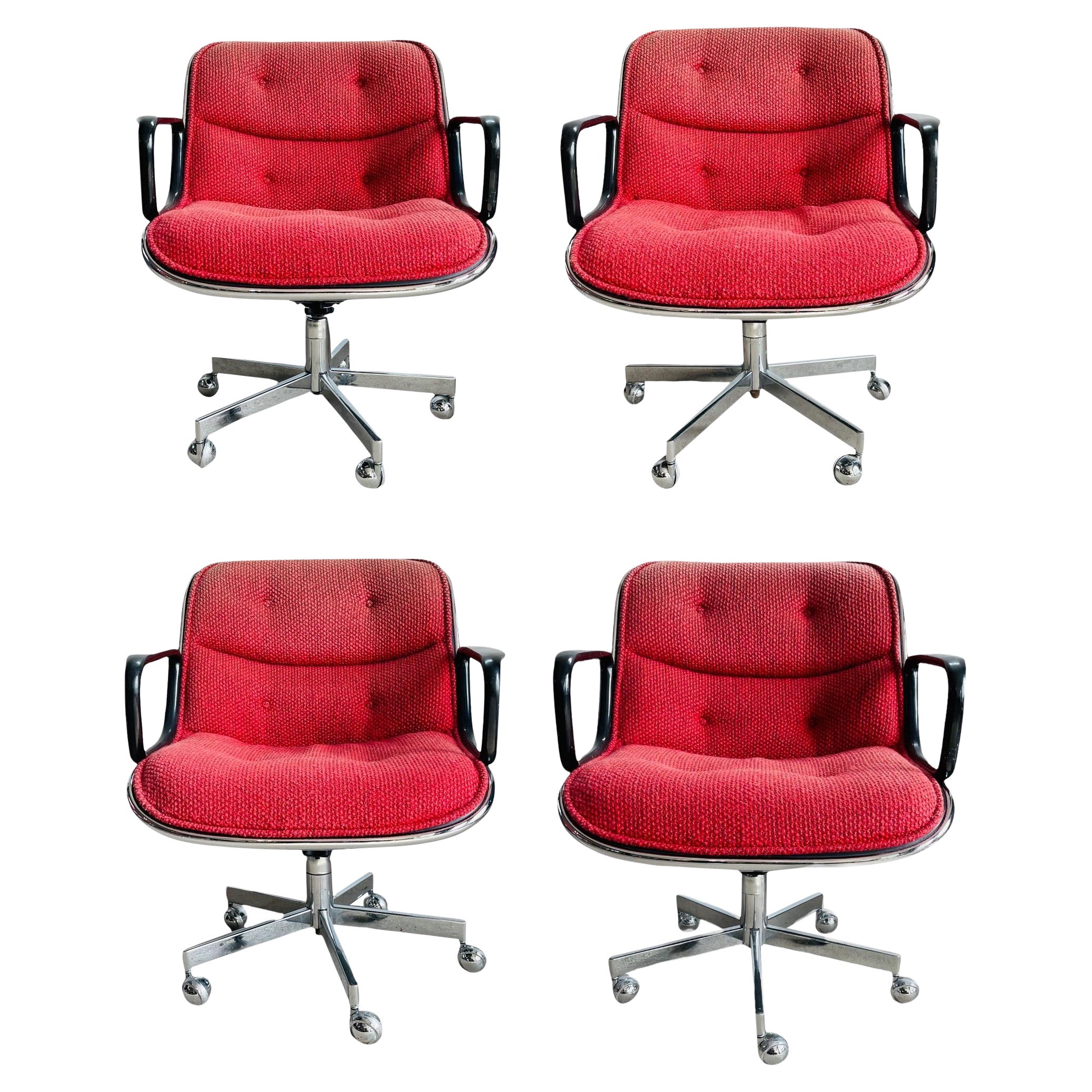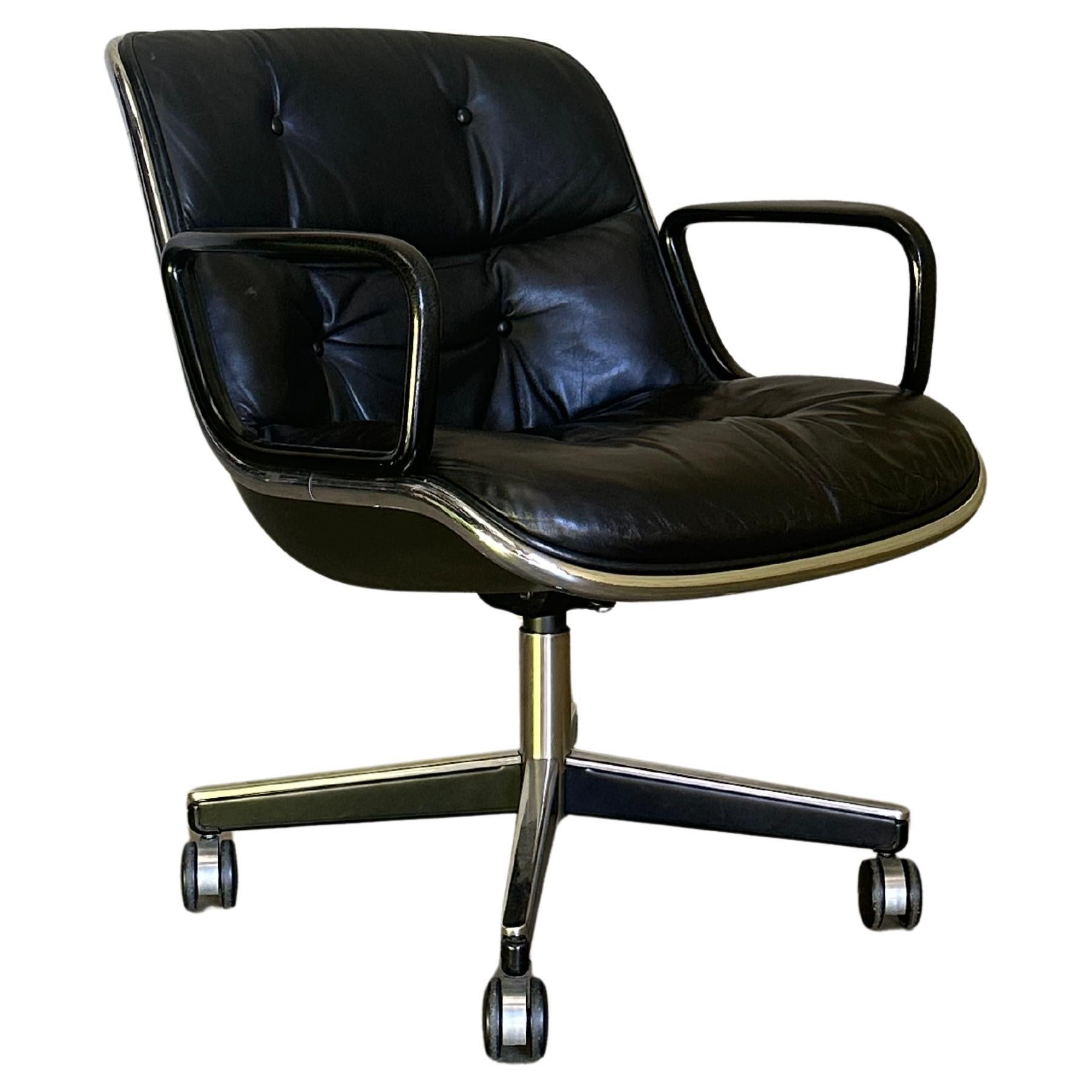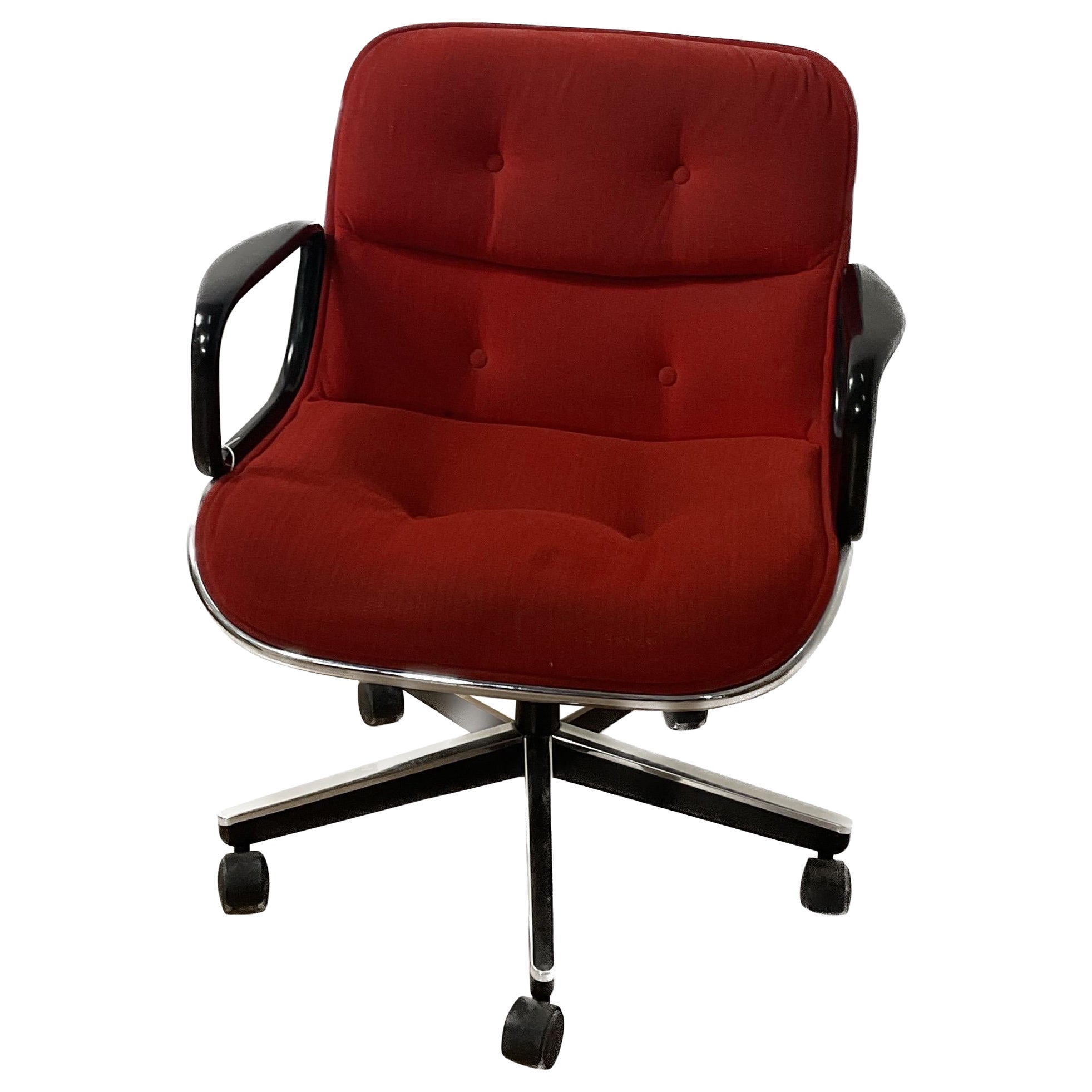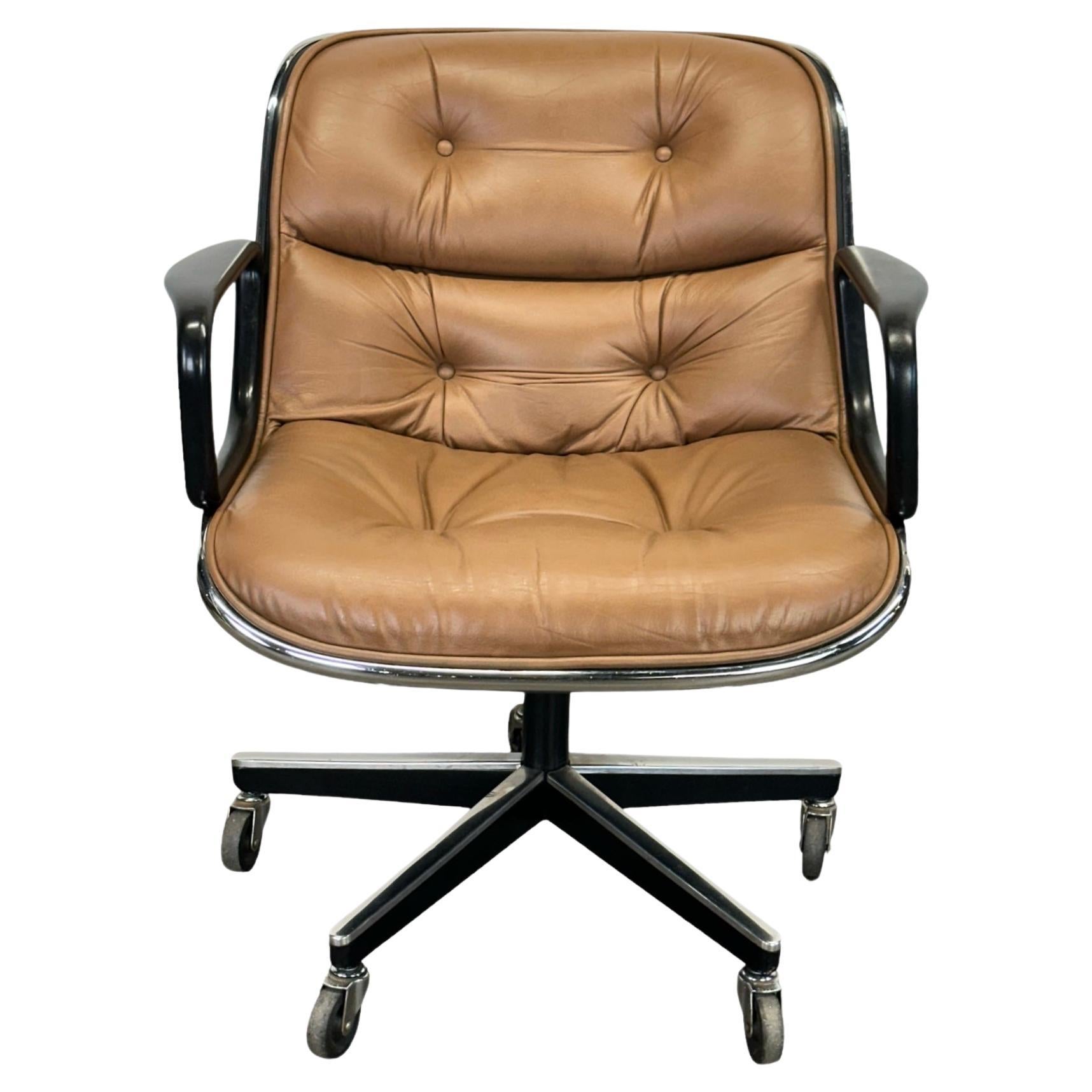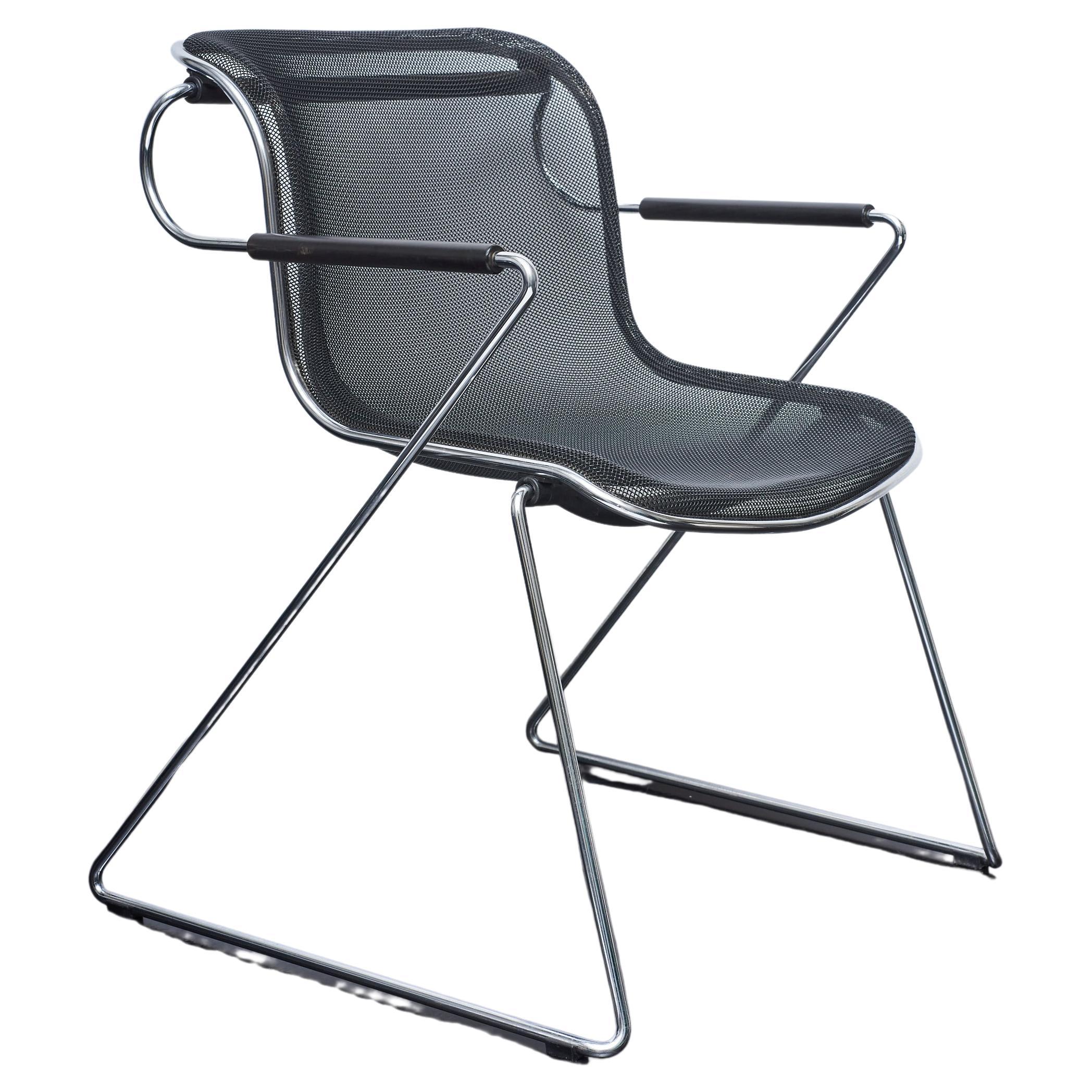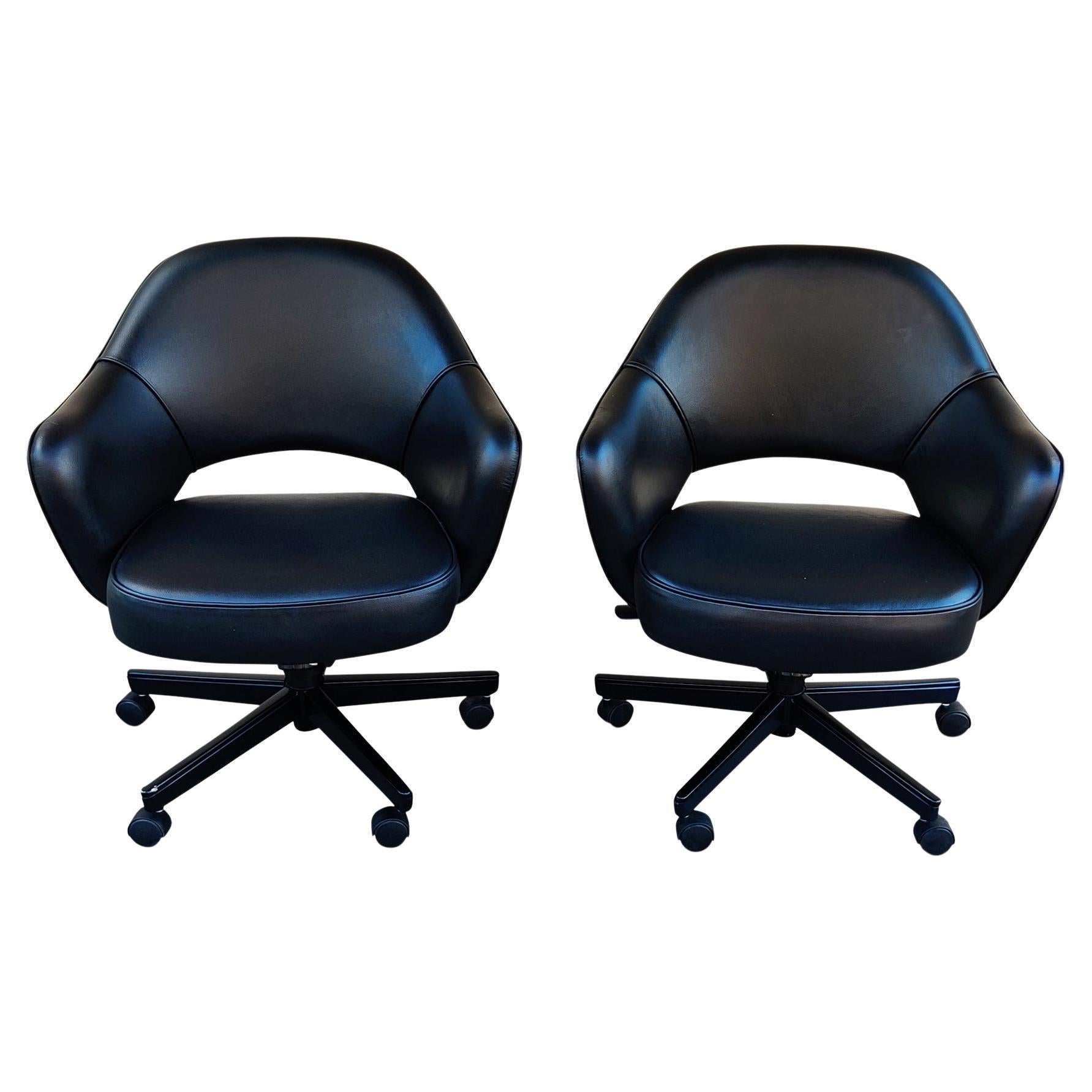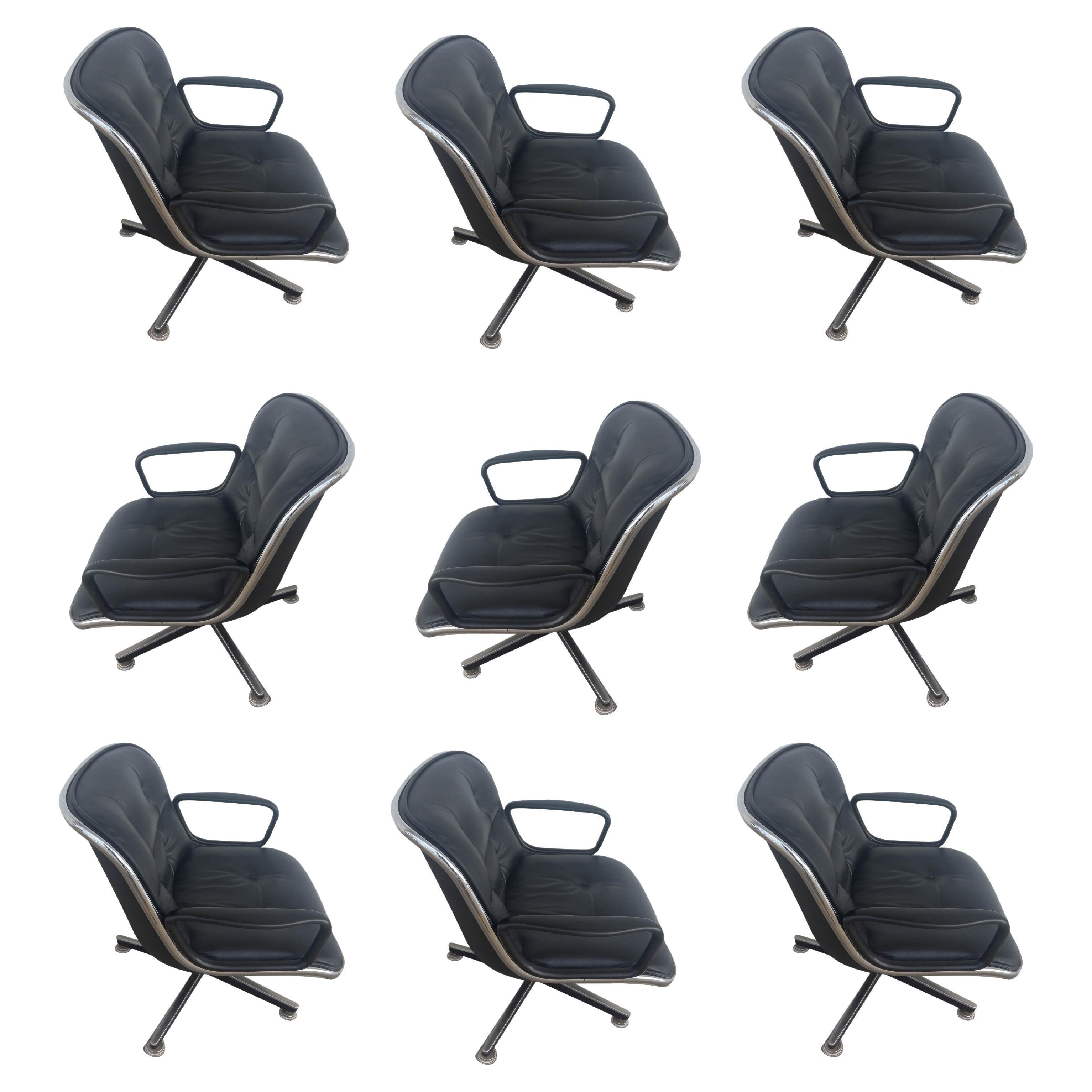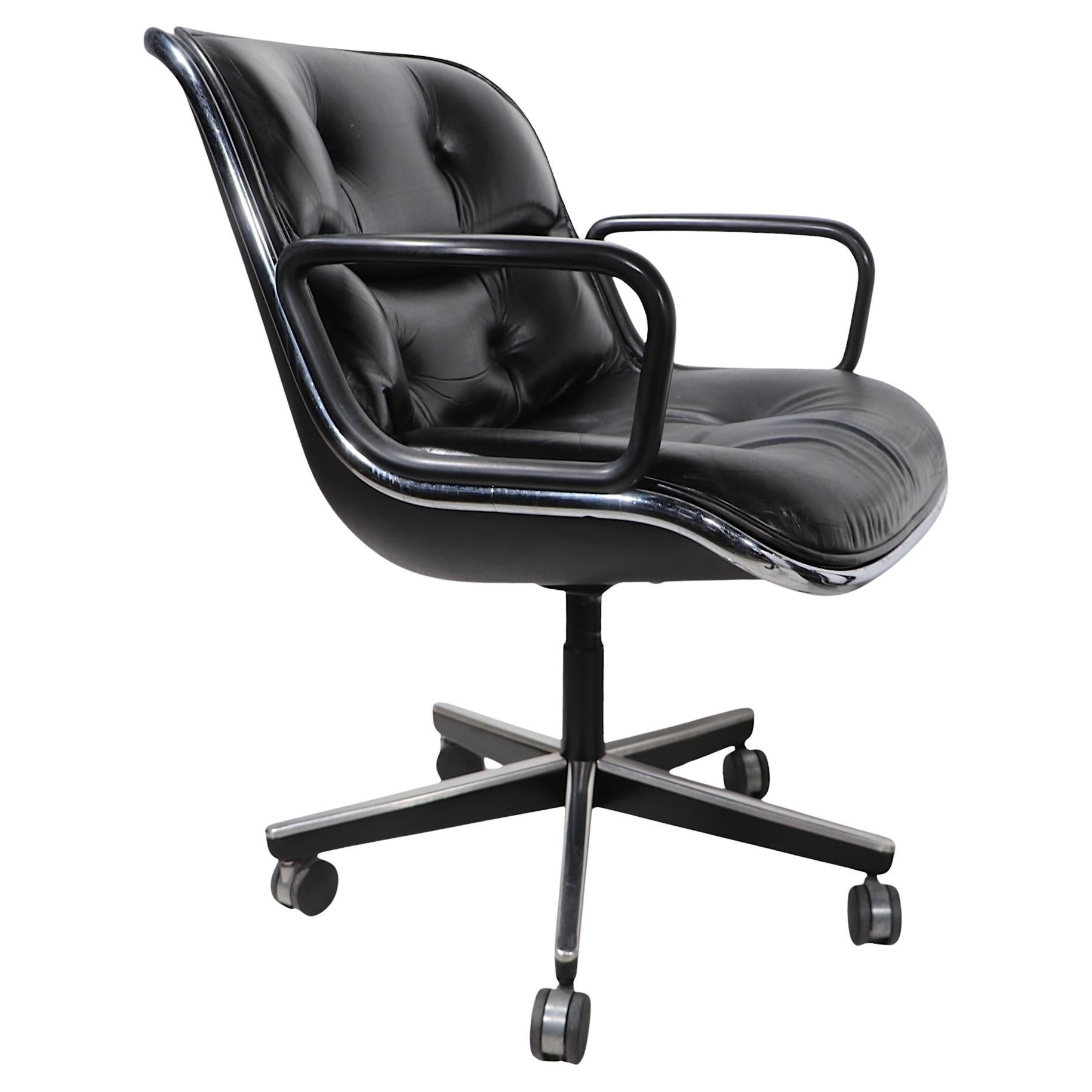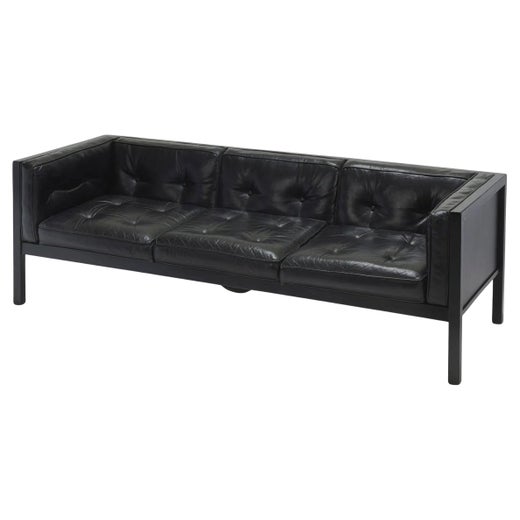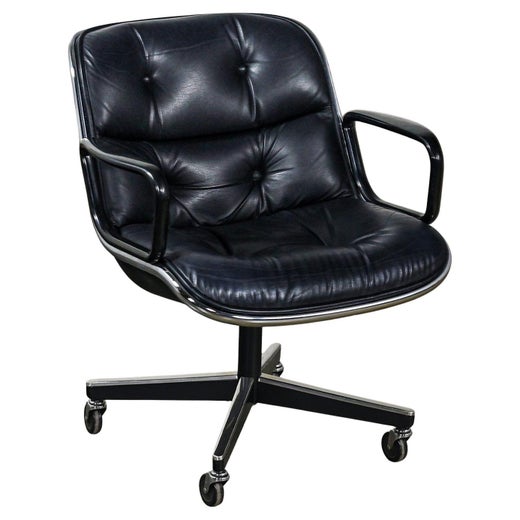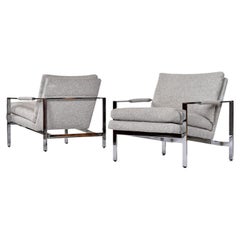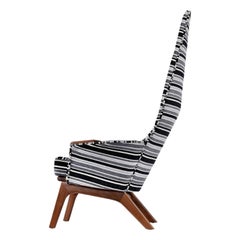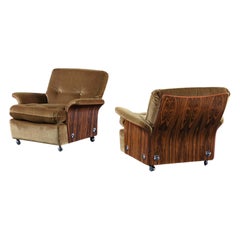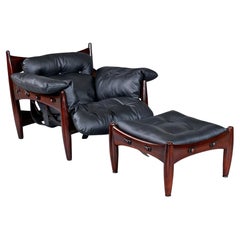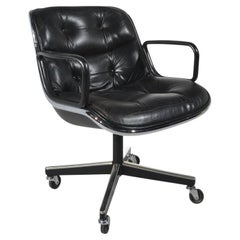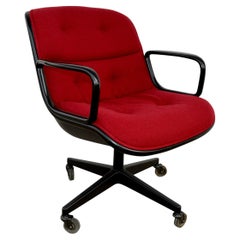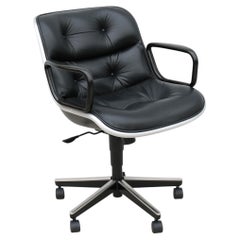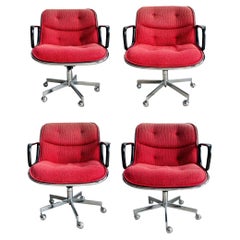
Charles Pollock for Knoll Red Tweed Executive Chairs w/ Height Tension Knob
View Similar Items
Charles Pollock for Knoll Red Tweed Executive Chairs w/ Height Tension Knob
About the Item
- Creator:
- Dimensions:Height: 32 in (81.28 cm)Width: 26.25 in (66.68 cm)Depth: 23.63 in (60.03 cm)Seat Height: 19 in (48.26 cm)
- Sold As:Set of 2
- Style:Mid-Century Modern (In the Style Of)
- Materials and Techniques:
- Place of Origin:
- Period:
- Date of Manufacture:1979
- Condition:Wear consistent with age and use. Excellent vintage condition. Professionally detailed top to bottom. Chrome edge band "rim" has a couple sections with minor scratches. The tweed fabric has very minor imperfections and age appropriate pilling.
- Seller Location:Chattanooga, TN
- Reference Number:1stDibs: LU2255327031672
George Nelson
Architect, designer, and writer George Nelson was a central figure in the mid-century American modernist design movement; and his thoughts influenced not only the furniture we live with, but also how we live.
Nelson came to design via journalism and literature. Upon receiving his bachelor’s degree in architecture from Yale in 1931, he won the Prix de Rome fellowship, and spent his time in Europe writing magazine articles that helped bring stateside recognition to Ludwig Mies van der Rohe, Gio Ponti, Le Corbusier and other canonical modernist architects.
In the 1940s, Nelson wrote texts that suggested such now-commonplace ideas as open-plan houses, storage walls and family rooms. D.J. De Pree, the owner of the furniture maker Herman Miller, was so impressed by Nelson that in 1944 — following the sudden death of Gilbert Rohde, who had introduced the firm to modern design in the 1930s — he invited Nelson to join the company as its design director. There Nelson’s curatorial design talents came to the fore.
To Herman Miller he brought such eminent creators as Charles and Ray Eames, Isamu Noguchi, and the textile and furniture designer Alexander Girard. Thanks to a clever contract, at the same time as he directed Herman Miller he formed a New York design company, George Nelson & Associates, that sold furniture designs to the Michigan firm. Nelson's studio also sold designs for clocks to the Howard Miller Clock Company, a manufacturer that was initially part of Herman Miller before it became an offshoot that was helmed by Howard Miller, D.J. De Pree's brother-in-law.
Nelson’s New York team of designers (who were rarely individually credited) would create such iconic pieces as the Marshmallow sofa, the Coconut chair, the Ball clock, the Bubble lamp series and the many cabinets and beds that comprise the sleek Thin-Edge line.
For dedicated collectors, as well as for interior designers who look beyond “the look,” there is a “cool factor” inherent to vintage pieces from George Nelson and others. Nelson was in on it from the start, and it’s valuable to have a piece that was there with him.
But still, as is evident from the offerings from dealers on 1stDibs, in any of the designs, in any iteration whose manufacture Nelson oversaw and encouraged, there are shining elements of lightness, elegance, sophistication — and a little bit of swagger. George Nelson felt confident in his ideas about design and didn’t mind letting the world know.
Charles Pollock
Charles Pollock was a renowned but reclusive furniture designer. He rarely spoke to the media and instead preferred to let his iconic designs speak for themselves. Pollock’s name is ubiquitous with mid-century modern office furniture — while vintage furniture obsessives know the office chairs he made for Knoll, he designed armchairs and lounge chairs for domestic interiors as well.
Pollock was born in Philadelphia, Pennsylvania, in 1930. When his family moved to Michigan, he attended Detroit's Cass Technical High School, whose alumni includes artist-designer Harry Bertoia. For his extraordinary work at Cass, Pollock earned a full scholarship to Pratt Institute in New York City.
Industrial designer Lucia DeRespinis had been a classmate of Pollock’s at Pratt and got a job in architect George Nelson’s studio after graduation. Nelson, the design director at legendary mid-century furniture manufacturer Herman Miller, was always looking for new design talent. DeRespinis was struck by Pollock’s sculptures at Pratt and recommended Nelson hire him. Pollock, who had been working for Donald Deskey’s firm, took a job with Nelson and helped create the Swag Leg armchair (a full Swag Leg collection debuted at Herman Miller in the late 1950s). Soon afteward, Pollock opened his own studio and shared his portfolio with pioneering designer Florence Knoll at the modernist behemoth she cofounded with her husband Hans.
Pollock’s 657 Sling chair for Knoll debuted in 1960 and earned him a substantial contract with the brand. This paved the way for his most famous design: the Executive chair. Introduced in 1963, the Executive chair became one of the best-selling and most recognizable office chairs in history. Pollock devoted five years to perfecting the seat, and his patented rim technology allowed for simple assembly, which contributed to its success and popularity.
Pollock later returned to sculpting and explored other pursuits but never stopped designing furniture. In 1982, he created the Penelope chair for the Italian furniture maker Castelli. At 82 years of age, Pollock was commissioned by American manufacturer Bernhardt Design to create the CP Lounge chair, which was launched at the London Design Festival 2012. Pollock died a short while later, in 2013, but his seating is still produced by Bernhardt Design today.
Pollock received much acclaim throughout his career. He earned several awards, including the prestigious Red Dot Design Award and Pratt Institute's Rowena Reed Kostellow Award for outstanding work in industrial design. His Executive chair has been exhibited at museums around the world, including the Louvre Museum and the Metropolitan Museum of Art.
On 1stDibs, find vintage Charles Pollock seating and other furniture today.
More From This Seller
View AllVintage 1970s American Mid-Century Modern Lounge Chairs
Chrome
Mid-20th Century American Mid-Century Modern Lounge Chairs
Upholstery, Walnut
Vintage 1970s English Mid-Century Modern Lounge Chairs
Velvet, Rosewood
Vintage 1960s Italian Mid-Century Modern Lounge Chairs
Leather, Rosewood
Mid-20th Century German Mid-Century Modern Lounge Chairs
Metal, Chrome
Vintage 1960s Danish Scandinavian Modern Club Chairs
Beech, Upholstery
You May Also Like
Vintage 1980s American Mid-Century Modern Office Chairs and Desk Chairs
Chrome
Vintage 1970s Mid-Century Modern Side Chairs
Metal
Early 2000s American Mid-Century Modern Office Chairs and Desk Chairs
Aluminum, Stainless Steel, Steel
Mid-20th Century American Mid-Century Modern Dining Room Chairs
Chrome
Vintage 1960s American Mid-Century Modern Office Chairs and Desk Chairs
Aluminum
Vintage 1970s American Mid-Century Modern Office Chairs and Desk Chairs
Metal
Recently Viewed
View AllRead More
A Guide to Herman Miller’s Most Iconic Furniture
The prolific manufacturer has partnered with many of the world’s top designers since opening its doors in 1923. Here are some of the company’s greatest hits, which helped transform the American home and office.
Kule and Forsyth Give Iconic Furniture a Bold Makeover with Stripes
Maggie and Anne Genovese, of Forsyth, teamed up with fashion designer Nikki Kule to reimagine some classic pieces.
